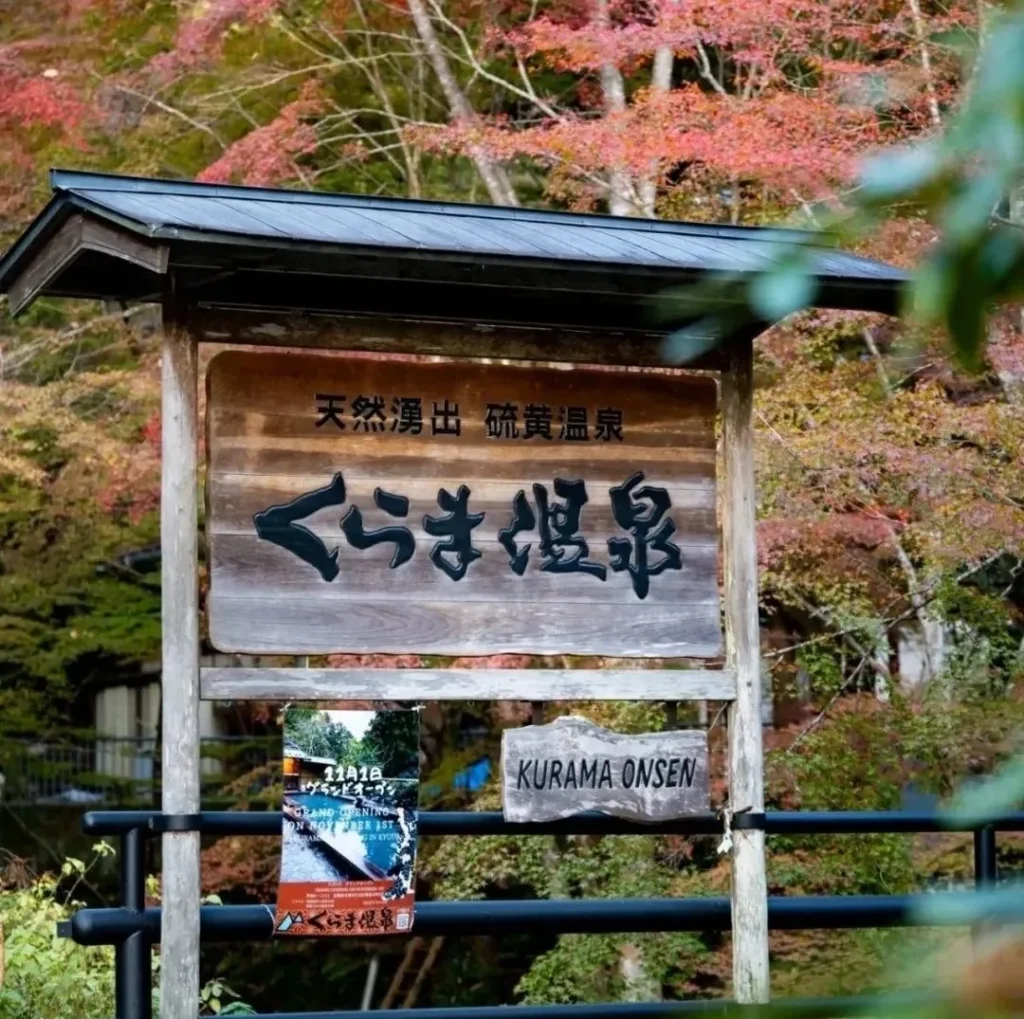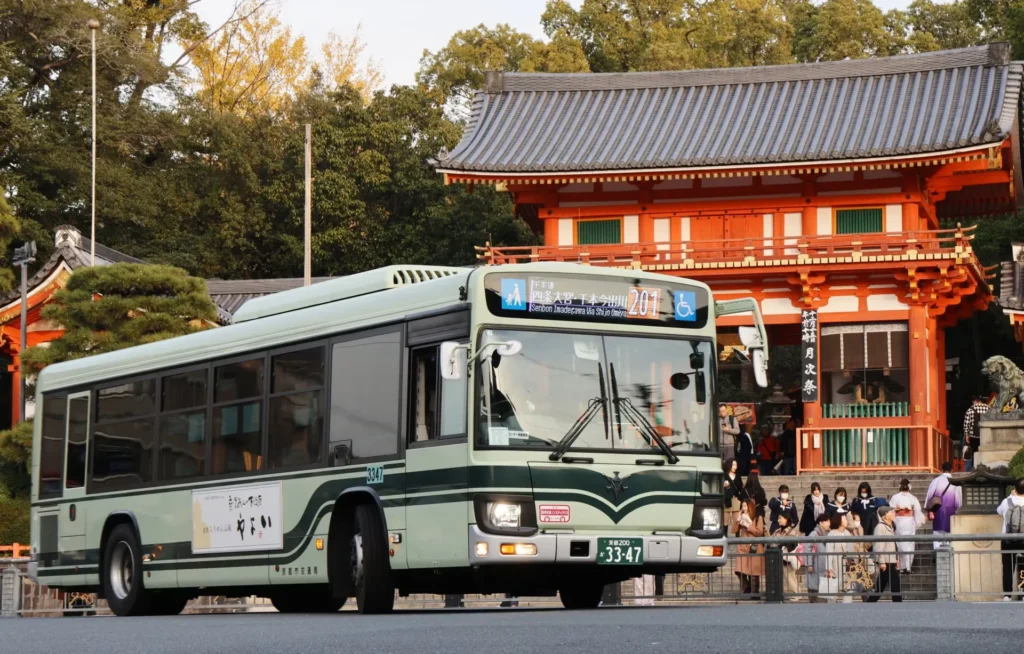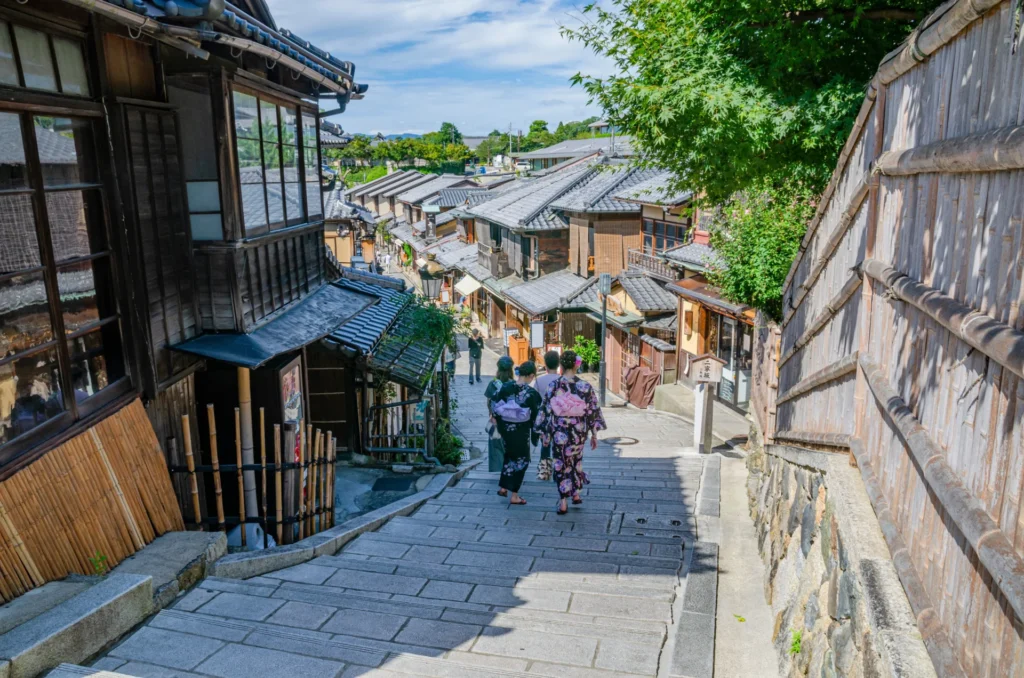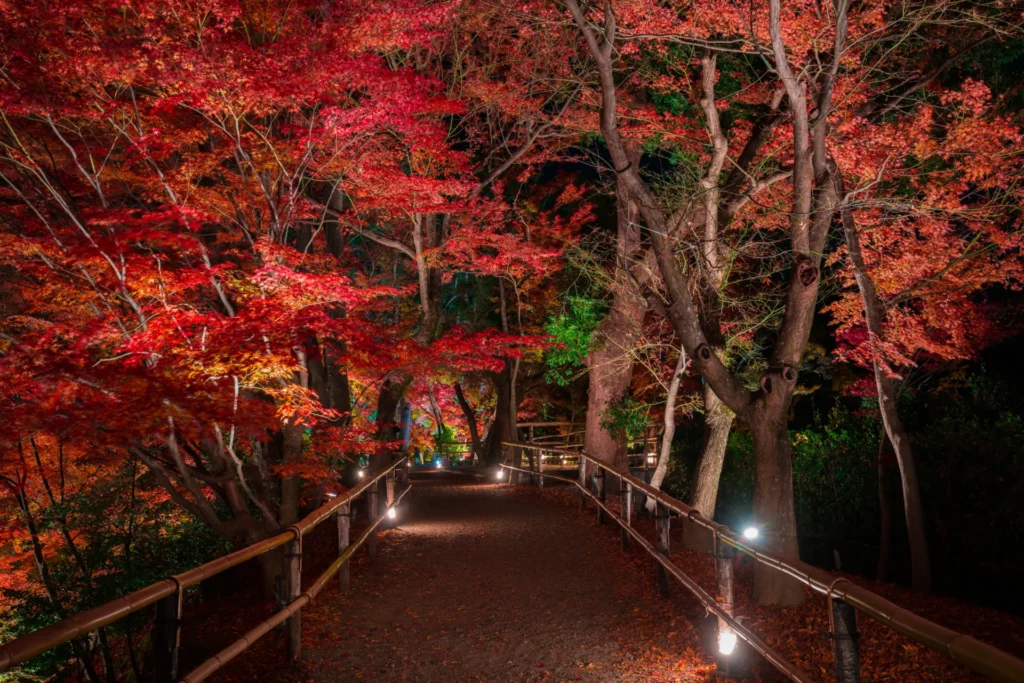京都
在京都您体验“日本精神”。身着传统和服,探索这座城市的古老寺庙和神社,品尝著名的高品质日式料理。
相关文章
-

大阪、京都和神户的8大冬季灯光秀!
想知道冬天去大阪、京都、神户哪里观光吗?日本各地都会举办盛大的灯光秀活动。从关西中心大阪梅田开始,京都和神户的历史建筑和标志性建筑也将在限定时间内被绚丽的色彩装点一新。今年,承载着神户市民祈祷和希望的传统节日也将回归。请务必将它列入您的旅行计划。※所有图片仅供参考。 <大阪>2025大阪灯光节 <大阪梅田>2025梅田蓝天大厦圣诞节 <大阪梅田>GRAND FRONT OSAKA「GRAND WISH 2025圣诞节」 <大阪梅田>梅北香槟金灯光秀 <大阪梅田>2025梅田遇见心 <大阪>2025大阪城灯光秀 <京都>2025NAKED meets NIJO-JO CATSLE KANGETSU <神户>2025神户圣诞市场 “2025大阪灯光节”是大阪府各地举办的大型冬季活动! 「御堂筋灯光秀 2025」2025年4月9日(周三)~12月31日(周三)御堂筋灯光秀 2025 将点亮连接梅田、心斋桥和难波的标志性街道御堂筋,总长4公里。这条长达约4公里的灯光路径不仅是日本最长的灯光路径,还于2015年1月被认定为世界纪录。「大阪光之复兴 2025」2025年12月14日(周六)~12月25日(周四)大阪光之复兴 2025 将在大阪水都的象征——中之岛沿岸呈现一场令人叹为观止的灯光秀。作为重要文化财产的大阪市中央公会堂,其令人惊叹的3D投影LED灯光秀绝对不容错过! 「区域活动」活动日程因场馆和装置而异,请查看官方网站。地点:御堂筋地区(阪神十字路口~难波西口十字路口)、大阪市中央公会堂~中之岛公园、1970年世博会纪念公园等。日期:2025年11月14日(周五)~12月25日(周四)。梅田著名景点之一的梅田蓝天大厦将举办一场璀璨夺目的灯光秀。在一楼广场,一棵约25米高的象征性树木已经亮相,树上装饰着约13万盏LED灯。今年的主题是“光之马戏团~夜空中闪耀的奇幻马戏团~”。白天是光彩夺目的马戏团,夜晚则是从黑暗中升起的美丽马戏团。去年大受欢迎的原创马克杯也是绝佳的纪念品。请查看官方网站 日期:2025年11月6日(周四)~12月25日(周四)*部分地区除外 位于大阪格兰前线北楼知识广场的巨型圣诞树每年都以其迷人的设计令游客惊叹不已。今年的圣诞树名为“无限许愿树”,内外均包裹着镜面材料,随着角度和时间的变化,呈现出令人眼花缭乱的视觉效果。站在环绕圣诞树的三角形装置前,仿佛置身于万花筒之中!这里也是绝佳的拍照地点。灯光秀以黄、红、蓝三色交替变换,更添梦幻氛围,将整个空间笼罩在迷人的光晕之中。地点:大阪格兰前线南北馆、梅北广场等。灯光秀:平日16:00~24:00,周末及节假日15:00~24:00 *每15分钟一场(最后一场23:45)。日期:2025年11月6日(周四)~2026年2月28日(周六)。位于JR大阪站北侧的“梅北地区”灯光秀不容错过。除了大阪格兰前线,新近开业的大阪格兰绿园和梅北公园的部分区域也装饰着约25万盏LED灯。优雅的香槟金色光芒营造出浪漫迷人的氛围。地点:梅北广场、大阪梅北公园等。日期:2025年12月1日(周一)~12月25日(周四)。今年是该活动的第六届,主题为“五颗心,环绕梅田”。主活动“HEART FES”将于12月13日(周六)至12月14日(周日)举行,为期两天。活动内容包括圣诞音乐会、工作坊、游行表演等,遍及梅田的五个区域。此外,“HEART SPOT”活动将联合梅田47家机构,用“心形”和“灯光”装点整个城市。地点:梅田地区。日期:2025年11月1日(周五)~2026年2月1日(周日)。大阪城西之丸庭园将被约350万盏LED灯点亮,与雄伟的天守阁交相辉映。灯光秀以将军、武士和头盔等图案为主题,展现了大阪从战国时代至今的历史。它以令人叹为观止的规模,将战国时代的记忆重现眼前。灯笼回廊,层层叠叠地展现着日本独特的审美情趣和历史底蕴,无数灯笼整齐排列,构成了一条梦幻而庄严的光影之路。灯笼回廊,层层叠叠地展现着日本独特的审美情趣和历史底蕴,无数灯笼整齐排列,构成了一条梦幻而庄严的光影之路。地点:大阪城西之丸庭园 日期:2025年10月31日(周五)~2025年12月7日(周日) 江户时代二条城居民仰望的月亮。这场仅限秋季的夜间艺术展,通过光影与传统文化的融合,重现了昔日的优雅。查看官方网站 地点:二条城 日期:2025年11月8日(周六)~12月25日(周四) 位于海拔约400米的神户布引香草园将举办特别的圣诞活动。您可以在这里欣赏神户令人叹为观止的夜景,以及园内装饰精美的塔楼,这里是绝佳的拍照地点!距离神户市中心和北野异人馆地区仅几步之遥,是您神户观光计划的理想之选。 地点:神户布引香草园及缆车 ➡点击此处查看详情 ▼查看以下文章▼ 神户十大美食!当地人推荐的特色美食 神户初体验 21个必做之事!观光、景点、餐饮、示范路线
-

鞍马温泉|距离京都中心仅一小时车程的隐秘温泉
从京都中心出发,只需短暂车程即可抵达鞍马,这里充满了传奇色彩,据说这里是神话中的天狗的家园。民间传说中,天狗曾训练年轻的武士牛若丸学习武艺。鞍马温泉坐落在郁郁葱葱的greenery之中,为您提供了一处静谧的休憩之所,您可以沉浸在舒缓的温泉水中,感受大自然的环抱。在京都观光之旅中,来这里放松身心、恢复活力,无疑是最佳选择。目录:1. 什么是鞍马温泉?2. 如何前往鞍马温泉?3. 门票和开放时间?4. 前往鞍马温泉需要携带的物品?5. 鞍马温泉周边值得一游的景点?鞍马温泉距离京都中心仅一小时车程,位于京都左京区鞍马山脚下,四周环绕着郁郁葱葱、未经破坏的自然风光。作为京都为数不多的适合一日游的隐秘温泉之一,其富含铁质的泉水据说能够美化肌肤、缓解疲劳。从位于高处山坡上的露天浴池,游客可以饱览周围群山的壮丽景色,四季景色变幻无穷,令人心旷神怡,仿佛置身于真正的山林深处。从京都中心前往鞍马温泉,最便捷的方式是乘坐火车或巴士。以下是两条主要路线:・从阪急四条河原町地区出发:【京阪本线】祇园四条站→出町柳站(约5分钟)【叡山电铁鞍马线】出町柳站→鞍马站(约30分钟)从鞍马站乘坐免费接驳巴士前往鞍马温泉(约3分钟)。接驳巴士的运行时间与火车到站和发车时间同步。・从JR京都站附近出发 [京都地铁乌丸线] 京都站 → 国际会馆站(约20分钟) [京都巴士(52路等)] 国际会馆站前 → 鞍马温泉前(约30分钟) 从鞍马温泉前巴士站步行约1分钟即可到达温泉。入场费根据套餐和日期而有所不同,请务必在到访前查看价格表。一日游无需预约,现场付款即可。如果您想彻底放松身心,强烈推荐包含室内浴池、露天浴池和桑拿的套餐。温泉还提供毛巾和浴服,让您尽享舒适惬意的泡汤体验。・一日游门票及开放时间 室内浴池、露天浴池及桑拿(含毛巾及浴服) 仅露天浴池 平日 周末及节假日 平日 周末及节假日 成人(13岁及以上) 2,500日元 2,700日元 1,400日元 1,600日元 儿童(3-12岁) 1,300日元 700日元 婴儿(2岁及以下) 免费 开放时间 10:00~21:00 以下是前往鞍马温泉一日游时需要携带的一些必备物品。虽然温泉内有很多东西可以购买,但提前做好准备会让体验更加顺畅。 ・毛巾 请携带两种毛巾:一条小毛巾和一条大浴巾。使用小毛巾洗脸,并在离开浴池前轻轻擦干身体(请记住,不要将毛巾浸入浴水中,这是礼貌)。沐浴后,请在更衣室用浴巾彻底擦干身体,这样有助于保持地面清洁干燥。・硬币:您需要一枚100日元的硬币才能使用投币式储物柜存放衣物。不用担心,硬币会在使用后退还,所以实际上是免费的。另外,您也可以准备一些硬币,以便在沐浴后从自动售货机购买饮料。・发圈:如果您留长发,请在进入浴池前将头发扎起来。这是基本的礼仪,可以防止头发接触到浴水。鞍马温泉提供洗发水、护发素、沐浴露和吹风机等用品,因此无需自带。鞍马温泉周边有很多观光景点,是您游览此地的理想之选。请您放慢脚步,尽情享受京都山间静谧之所的自然美景和宁静氛围。・鞍马寺 鞍马寺位于鞍马温泉附近,是一座历史悠久的寺庙,以天狗(神话中的山神)和牛若丸(后来的源义经)的传说而闻名。游客可以乘坐缆车(约2分钟)或徒步(约40分钟)到达山顶的主殿。许多人喜欢在欣赏完林间小径的美景后,在温泉中放松身心。・贵船神社 另一个热门景点是贵船神社,通常与鞍马寺一起游览。从鞍马温泉出发,乘坐免费接驳巴士前往鞍马站,然后换乘叡山铁道前往贵船口站。从贵船口站乘坐京都巴士(33路等)到贵船站,然后步行5分钟即可到达神社(全程约20分钟)。或者,您可以选择著名的登山路线,翻越鞍马寺,这条路线被誉为游客最爱的“黄金路线”。全程大约需要一小时,所以一定要穿舒适的步行鞋。▶<京都>贵船神社|从礼遇到御守,完美指南!鞍马距离京都中心仅一小时车程,为您提供独特的温泉体验,让您置身于大自然的怀抱之中。除了舒缓身心的温泉,您还可以沉浸在鞍马寺和贵船神社的神圣宁静氛围中。这是放松身心、探索京都另一面的绝佳方式。
-

日本旅行实用小贴士|从灾害应对到火车礼仪和寺庙参拜
计划去日本旅行?这里有一些让你的旅途更顺利、更安全的必备小贴士。从紧急情况下可用的可靠资源,到公共交通上的礼仪,以及参观寺庙和神社时的注意事项,本指南涵盖了所有内容。记住这些,你就能安心享受你的日本之旅了!索引 1. 去日本旅行前你应该知道的防灾准备 ・紧急情况下有用的网站和社交媒体 ・发生灾难时旅行时携带的物品 ・如何在地震中保护自己 2. 去日本旅行前你应该知道的火车礼仪 3. 去日本旅行前你应该知道的公共汽车礼仪 4. 去日本旅行前你应该知道的寺庙和神社礼仪 当你在日本遇到灾难时,这里有一些有用的网站和方便物品可以帮助你保护自己。我们还总结了地震发生时你可以采取的快速安全措施。日本安全旅行信息 该网站由日本国家旅游局 (JNTO) 运营,提供浅显易懂的地图,其中显示地震、海啸灾害、暴雨和强风警报等信息。该网站还提供各种对旅行者有用的资源链接。 日本游客热线(JNTO 呼叫中心) 一个可靠的 24/7 全年呼叫中心,旨在确保国际旅行者在发生事故、疾病或灾难时能够安全安心。提供英语、中文、韩语和日语支持。电话号码:+81 50-3816-2787 NHK WORLD-JAPAN 日本唯一的公共广播机构 NHK 的国际广播服务。它以多种语言向世界各地提供新闻和各种节目,同时还介绍日本和亚洲的最新消息以及日本文化。此外,JNTO 还运营社交媒体账号,为国际旅行者提供灾害期间的必要信息: ●X 账号:@JapanSafeTravel ●微博账号:“安心访日”Japan Safe Travel 移动电源 智能手机在灾害发生时必不可少,可以用来查阅信息网站和社交媒体,或者使用翻译功能。但是,灾害发生后,可能很难找到充电的地方。请务必携带移动电源作为备用。 口罩 从秋冬季节开始,空气容易变得干燥,因此随身携带口罩是个好主意。它不仅有助于防止喉咙干燥,还可以降低感冒或流感的风险,这些疾病在灾害期间更容易传播。 零食和饮料 在发生大规模灾害、生命线被切断时,或者如果您被困在停运的火车上,零食和饮料会很有帮助。建议吃饼干或薄脆饼干等馅料,而绿茶或咖啡则可以起到提神的功效。选择可以在室温下保存的食品。地震发生时,请立即躲在坚固的桌子或桌子下,用袋子或垫子保护头部,等待地震停止。惊慌失措地冲出户外非常危险,因为可能会有坠落物。地震停止后,请小心撤离,避开碎玻璃等危险物,并转移到安全的地方。如果发生大地震,可能会有海啸的危险。如果发布海啸警报,请立即前往地势较高的地方。日本的火车准时、按时刻表运行,而且非常安全,即使在车上睡着也不用担心。虽然火车非常方便可靠,但也有一些在其他国家可能没有的独特规则。在日本乘坐火车时,请注意以下几点:上车时请排队等候。禁止插队。请勿在车厢内留下垃圾;请将其丢弃在车站的垃圾桶内。请考虑其他乘客的感受,避免大声喧哗。尽量在私人空间打电话,请勿在车内通话。尤其在普通列车上,请避免食用气味浓烈的食物。部分观光景点的公交车出行十分便捷。然而,近年来,外国游客的公交车礼仪问题已成为京都社会关注的焦点。请注意,许多人乘坐公交车上下班或上学。乘坐公交车时,请务必遵守以下礼仪:排队等候上车。禁止插队。请勿将垃圾留在车上,请自行携带。请考虑其他乘客的感受,避免大声喧哗。尽量在私人空间打电话,请勿在车内通话。车内过道狭窄,请避免携带大件行李(例如行李箱)。车内空间有限,请避免食用气味浓烈的食物。京都的主要交通工具是公交车,但不建议携带行李箱上车。如果您有行李箱,“阪急河原町旅游信息中心”提供当日送达服务,非常方便。 https://enjoy-osaka-kyoto-kobe.com/ja/article/a/baggage-service-kyoto/ 神社和寺庙原本并非观光景点,而是宗教设施。参观时,请牢记以下几点,以示尊重并遵守礼仪。 日本神社礼仪 1. 避免大声喧哗。神社是神圣的地方。一旦穿过鸟居,就进入了神圣的区域。请勿大声喧哗,保持尊重。 2. 请勿在境内饮食。许多神社禁止饮食或携带食物进入境内。请注意。 3. 请勿触摸建筑物和鸟居。严禁倚靠、攀爬或触摸鸟居。请将其视为神圣之物。 4. 查看摄影规定。神社是举行仪式和祈祷的场所。许多区域禁止拍照,因此拍照前请务必确认相关规则。5. 请勿走在参拜道的中央。中央道路被视为神灵的通道。请沿着两侧行走。6. 如何祈祷。在鸟居前鞠躬一次,在手水屋(水盆)处净手,在主神殿遵循标准仪式:两鞠躬、两拍手、一鞠躬(ni-hai、ni-hakushu、ippai)。日本寺庙礼仪 1. 避免大声说话。寺庙是神圣的地方。一旦您穿过正门(sanmon),您就进入了圣地。保持安静并保持尊重。2. 请勿在寺庙内饮食。通常禁止饮食或携带食物进入寺庙。3. 请勿触摸佛像。禁止触摸或倚靠佛像。必须以崇敬的态度对待它们。4. 查看摄影规则。正殿或本尊前通常禁止拍照。请务必遵守指示牌。5. 祈祷方法。在山门前鞠躬,在手水舍净手,在正殿双手合十默默祈祷,但不要拍手。如何区分神社和寺庙?神社:通常设有鸟居和守护狮子犬(狛犬)。寺庙:通常设有正门(山门)、佛像或佛塔。遵守礼仪和礼节,参观神社和寺庙时就能充分感受到其庄严神圣的氛围。
-

京都和神户值得一去的 6 家星巴克门店
"星巴克咖啡 "因其舒适的空间和高品质的咖啡而备受喜爱。您知道吗,近年来,越来越多的商店在设计上体现了当地的历史和文化。在此,我们将介绍京都和神户的人气店铺星巴克,这些店铺也是值得一去的观光胜地! 索引星巴克: 发掘日本地方文化的地方星巴克咖啡 京都 九坂八坂茶屋:传统日式民居中的咖啡星巴克京都咖啡乌丸六角:与背景中的寺庙融为一体星巴克京都咖啡 三条大桥:加茂川河畔餐饮的休闲体验星巴克Coffee Kyoto Uji Byodoin 表参道:提供季节性景观的花园星巴克神户北野异人馆咖啡:神户北野神馆:位于历史街区的西式建筑星巴克神户咖啡美利坚公园:可眺望神户海景的商店星巴克在日本一定要品尝的饮品星巴克在京都和神户一定要购买的纪念品 这些商店被称为 "地区地标商店",建于日本各地的标志性地点,旨在与世界分享各地的文化。在这些商店里,人们可以一边品尝美味的咖啡,一边欣赏当地的风景,与传统建筑风格融为一体,或在只有在该地区才有的独特空间里放松身心。在通往联合国教科文组织世界遗产清水寺的二年坂,有一家名为星巴克Kyoto Ninenzaka Yasaka Chaya 的咖啡馆。这家商店与历史悠久的街景融为一体,坐落在一座拥有 100 多年历史的传统日式町屋内。令人惊奇的是,它是世界上唯一一家可以坐在榻榻米上享用咖啡的星巴克!穿过传统的门帘,您将走过京都町屋特有的狭窄通道。过了通道,就仿佛回到了古老的日本。在这里,客人可以脱掉鞋子,坐在地垫上休息,以日本特有的方式享用星巴克咖啡。店内有许多值得注意的细节,例如灵感来自希腊神话中海妖鳞片的原创艺术品(星巴克徽标中的图案),以及用京都著名的西阵织布制作的织物。在京都中京区的六角堂寺旁,矗立着星巴克Kyoto乌丸Rokkaku。该店的设计与寺庙的氛围和谐地融为一体,融入了传统的日本美学,是寺庙和神社爱好者无法抗拒的地方。靠窗的柜台特别受欢迎,透过大玻璃窗,可以近距离欣赏六角堂的动态美景。店内的木质桌椅营造出一种温馨、统一的氛围,让人感觉既现代又深深扎根于日本传统之中。星巴克受到游客和当地人的喜爱,在这里可以一边欣赏寺庙的四季美景,一边品尝自己喜欢的饮品,非常惬意。星巴克Kyoto Sanjo Ohashi 位于三条大桥脚下,就在京都深受喜爱的鸭川旁。咖啡厅的大窗户洒满了自然光,营造出明亮开阔的氛围。在座位上,您可以欣赏到鸭川对面的城市景观,以及京都四季变幻的美景。该店最具特色的是每年 5 月至 9 月设置的 "Noryo-yuka "露台。这些河畔露台是京都夏季的经典传统,通常在高级餐厅才能看到,但在星巴克,您可以无需预约,随意体验。一边品尝咖啡,一边聆听河水缓缓流淌的声音,感受凉爽的微风,是一种令人难忘的享受。星巴克Kyoto Uji Byodoin Omotesando 位于通往联合国教科文组织世界遗产--毗堂院的路旁,在这里您可以一边喝咖啡,一边欣赏毗堂院花园的美景。傍晚时分,庭院灯火通明,营造出与白天截然不同的氛围。该店的亮点之一是露台座位,其设计类似于传统的日式阳台(engawa)。店内装饰也融合了传统与现代,以温暖的木质装饰和原创艺术品为特色,将漆器与咖啡豆袋相结合。最终营造出一个宁静、独特的日式空间。宇治因其抹茶而闻名,在这里品尝抹茶饮品,感觉比在其他地方更特别。星巴克神户北野异人馆位于神户最具代表性的观光区之一--北野异人馆的中心。该店位于一座建于 1907 年的西式住宅内,本身也是注册有形文化遗产。在白色外观的映衬下,深绿色的建筑显得格外醒目,是一个深受欢迎的拍照地点。不要错过拍摄专为这家商店定制的木质星巴克标志。走进店内,您会感觉自己被邀请进入了一座历史悠久的私人宅邸。这里原本是美国人的住宅,设有宽敞的客厅、安静的书房和迷人的露台,每个空间都有自己独特的氛围。在一个多世纪前的家具环绕下,您可以在怀旧和优雅的氛围中享受咖啡时光。星巴克神户美利坚公园位于神户港边,外观设计独特,酷似一艘游轮。神户港塔(Kobe Port Tower)和海事博物馆(Maritime Museum)等地标性建筑位于美利坚公园内,周围有许多上镜景点。夜晚,灯火通明的港口营造出一种神奇的氛围,让人流连忘返。餐厅内,几乎每个座位都有落地窗,神户港的美景尽收眼底。从二楼俯瞰,仿佛置身于船头,而露台座位则是在阳光明媚的日子里吹着清爽的海风品尝咖啡的绝佳场所。说到日本特有的风味,抹茶拿铁是不可不尝的。抹茶略带苦涩的味道与牛奶的甜味完美平衡,创造出丰富而有层次的风味。其他时令口味通常包括焙绿茶、蕨类淀粉饺子、黑糖、烤红薯等。去的时候一定要看看有什么可选!星巴克在京都和神户,"当地独家商品 "都是非常受欢迎的纪念品。请务必查看 "去过那里系列 "不锈钢瓶和马克杯,世界各地的星巴克都有销售。KYOTO 的设计图案包括舞妓(艺妓学徒)、枯山水等。KOBE 设计展示了神户港的夜景和神户北野异人馆商店等当地景点。别忘了买一张作为旅行纪念! 当然,星巴克是品尝美味咖啡的好地方,但在京都和神户,您还可以沉浸在当地的历史、传统和风景中。一定要顺道去看看,这将是丰富您旅行体验的独特方式。
-

〈2025〉京都秋叶灯光秀指南
在日本众多美丽的秋叶观赏地中,京都尤其受欢迎。避开白天的拥挤人潮,选择夜间观光。以下推荐几个可以欣赏到特别观赏和灯光秀直至深夜的景点。索引:金海光明寺“秋季特别观赏:夜间游览”;北野天满宫“历史遗迹大土井枫苑开放及灯光秀”;仁和寺“云海灯光秀【夜间观赏】”;宝贺院“灯光秀及特别夜间观赏”;京都植物园「京都灯光秀」,2025年11月15日(周六)至2025年12月7日(周日),下午5:30至晚上8:30(晚上8:00停止入场)。金海光明寺坐落在俯瞰京都市的山丘上。秋叶倒映在灯光照耀下的“紫云之庭(花园)”水面上,美不胜收,是欣赏秋叶美景的绝佳地点。2025年11月1日(星期六)至12月7日(星期日),日落至晚上8:00(最晚入场时间为晚上7:40)。北野天满宫不仅拥有美丽的秋叶,还有茂密的竹林,是同时欣赏秋叶和竹林的热门拍照地点。流经红叶庭园的南北向神宫川河面被染成红色,灯光映衬下,营造出梦幻般的氛围。 2025年10月24日(星期五)至2025年12月14日(星期日),每周五、周六、周日及节假日举行,下午6:30至晚上9:00(接待时间:下午6:00至晚上8:30)。※如遇追悼会或其他活动调整,活动可能临时取消。仁和寺是世界遗产,始建于公元888年。寺内广阔的庭院中,秋叶点缀其间,景色壮丽。“秋叶云海”灯光秀将五重塔等建筑上绚丽的秋叶映衬得更加迷人。现场还会制造人工雾气,营造出梦幻般的氛围。 2025年11月14日(星期五)至2025年12月7日(星期日)下午5:30至晚上8:30 ※最晚入场时间为晚上8:00 宝阁院是天龙寺的子寺院之一,“狮子园”——在特别开放日期间对公众开放——是一个借用岚山景色的漫步式园林。园内绿苔也十分美丽,秋叶与苔藓的对比更是壮丽。 2025年5月24日(星期六)至2026年3月31日(星期二),9月9日至9月30日:下午6:30至晚上9:30(最后入场时间为晚上8:30)※每周一闭馆;10月1日至2月28日(暂定):下午6:00至晚上9:30(最后入场时间为晚上8:30)※每周一闭馆;3月1日至3月31日(暂定):下午6:30至晚上9:30(最后入场时间为晚上8:30)※每周一闭馆。※如遇周一为节假日,则演出照常进行,下周二闭馆。日本历史最悠久的公共植物园——京都植物园,将在夜间敞开大门。这场沉浸式体验活动将让各个年龄段的游客调动感官,在光影与声响的交织中,探索植物的全新魅力。京都的赏枫景点众多,一次游览不可能全部看完,但要充分利用傍晚的时光,按照自己的节奏尽情欣赏枫叶美景。
-

京都半日游|参观建筑师隈研吾的设计与建筑创作
-

京都洛西口一日游|来竹林小径骑行吧!
-

京都一日游|体验手工!友禅染和和果子(日式点心)
-

【京都】一日游行程|漫游京都东山红叶景点!
-

【京都岚山】一日游行程|从热门景点到不为人知的景点!

















